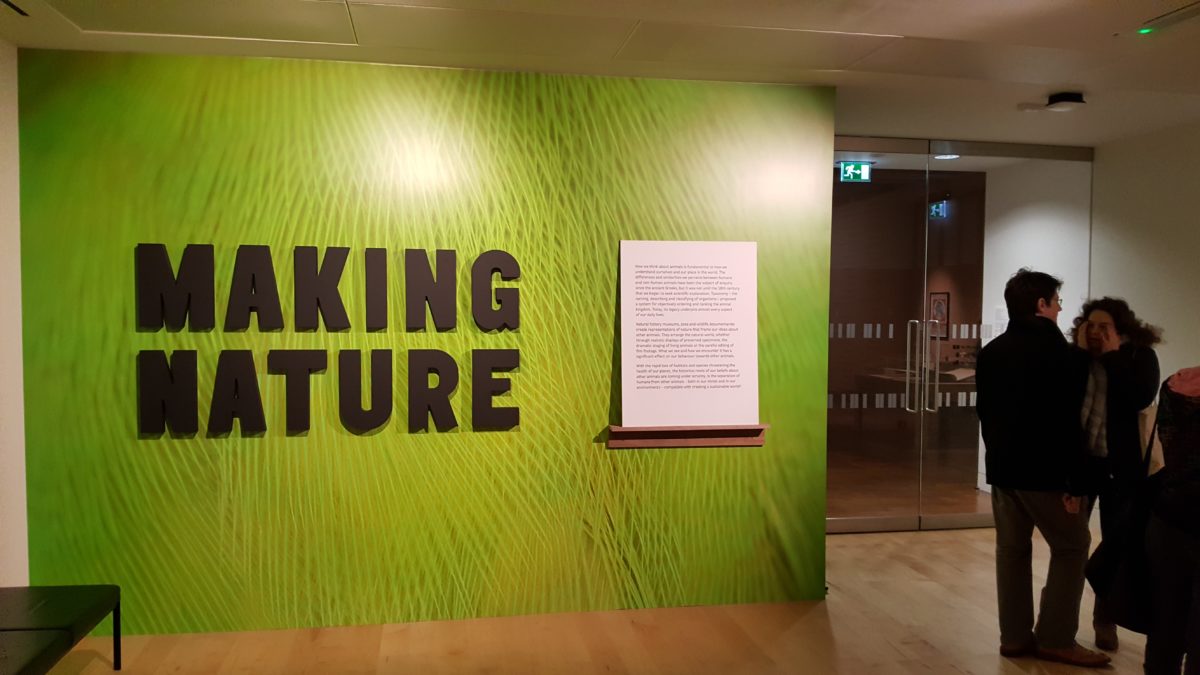Making Nature: How We See Animals – Wellcome Collection, London
This is an interesting exhibition, which reflects on how we, as humans, see our fellow animals, and what effect our interactions with and understandings of animals have on them. It opens by looking Linnean classification of species (ie. the Enlightenment era division of living things into kingdoms, species, etc) including a fascinating and fragile dried John Dory mounted on paper which is the archetype of the species, and ends with a series of animals or plants which have deliberately been modified by humans. Interesting stuff.

What was particularly interesting to me was the way that the exhibition invited the viewer to think about the topic at hand. Two cases in point: firstly the entrance, which poses a series of questions, for example ‘Do you see colours?’, ‘Do you kiss?’, ‘Can you generalise?’, all of which invite the question of what it is that really separates us from our animal cousins and sets the scene for what is to follow. The other touch that I quite liked was the presence of a couple on taxidermied animals in different parts of the exhibition. Not as displays per se (there were some taxidermied exhibits, including a card-playing party of squirrels), but a fox under a table, and a badger in the corner, for example. Watching a mother and he young children down on their hands and knees to ‘wake the fox up’ was at the same time sweet and sad, and made me wonder: to what extent is the naturalistic but sadly dead fox changed by the human looking at it?

My favourite part of the exhibition was the last room, with a number of loans from the Center for Postnatural History in Pittsburgh (I want to go!). This rooms encourages a slow museum experience, with exhibits which require further explanation, and a listening post in front of each one to give details on what it is and how humans have helped to shape it. A mouse foetus treated so that its soft tissue is transparent and other systems colour coded is particularly fascinating.

I may not have spent quite enough time in the exhibition to get a sense of what the underlying message was meant to be: is it ecological? Cautionary? As a way of bringing to the forefront the lens through which we view the natural world it is quite effective, and the sense of fun which the Wellcome brings to the subject matter makes it accessible to a wide audience.
Until 21 May, Free

